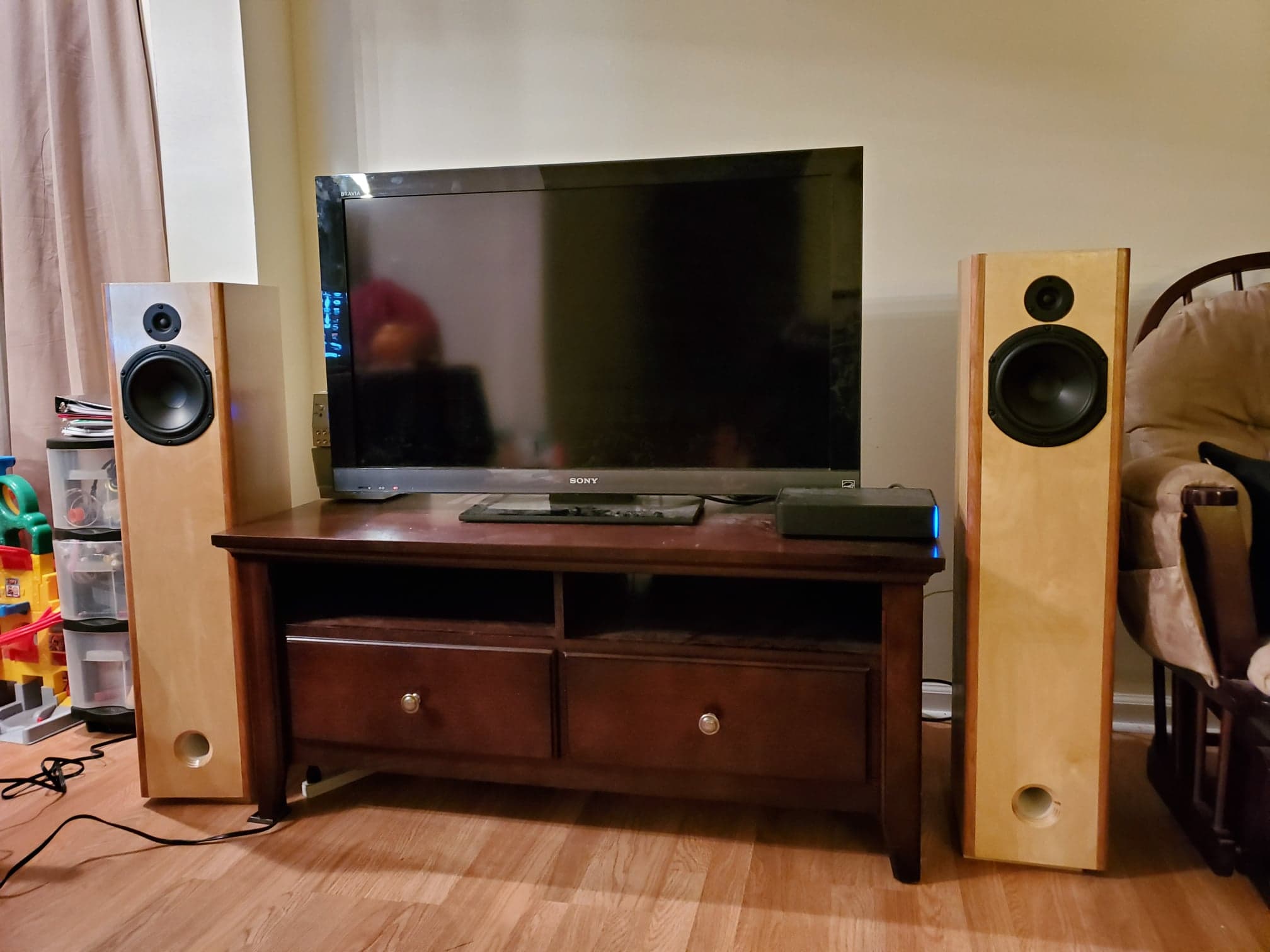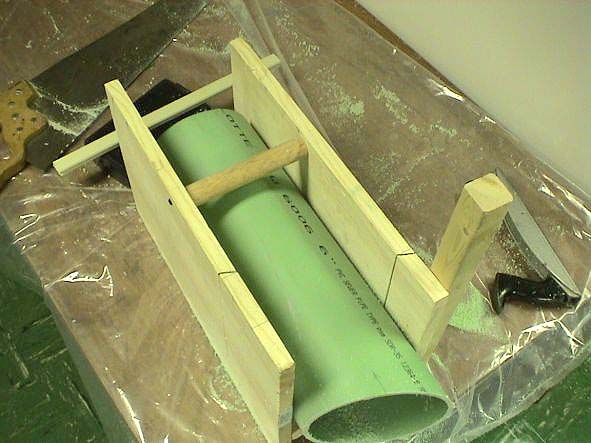



Acoustastuff and long hair wool are the prefered materials (the new Miraflex by Owens-Corning may be OK), these both have convoluted surfaces along the length of the fibers, which aid in the function of the material. Fiberglass or polyfill can be used, but these are not the best. The material chosen affects both the apparent speed of sound in the line AND the apparent increase in box volume. The line should be stuffed with an average of about 0.5 lbs to 0.7 lbs of acoustical stuffing material per cubic foot of line volume.This is the hard part, as the line stuffing affects both the total apparent line length AND the total apparent box volume simultaneously. The line length should be 1/4 wavelength tuned to the resonant frequency of the chosen speaker IN THE BOX VOLUME CREATED BY THE TOTAL T-LINE CROSS SECTIONAL AREA TIMES LENGTH, and as if the box were a closed box.This means a very tight sizing for the woofer mount and the begining of the line. The area can be gradually tapered down to the actual area to save space, but it can remain the same as when it started, as long as it is not more than than about 20-25% more area. Normally, it is difficult to make the line area exactly equal to the cone area, as the frame and mounting immediately force an area larger than the cone area. The line area should equal or exceed slighty the cone area of the driver used.My data is taken from Bailey, and years of experience of my own, culminating in several pairs of successfull T-lines, one of which I use to this day. I can give you the basics, and explain the first principles, and this might allow you to forge ahead on your own. Some claim to have done this, but it doesn't seem to allow a first time build without adjustments, so the models have enough wrong to require a fudge factor at least.

The classic transmission line bass enclosure has never been completely and successfully modeled such that it can be built from a pat set of equations. Editor's Note: This methodolgy is obselete and here for historical purposes.


 0 kommentar(er)
0 kommentar(er)
